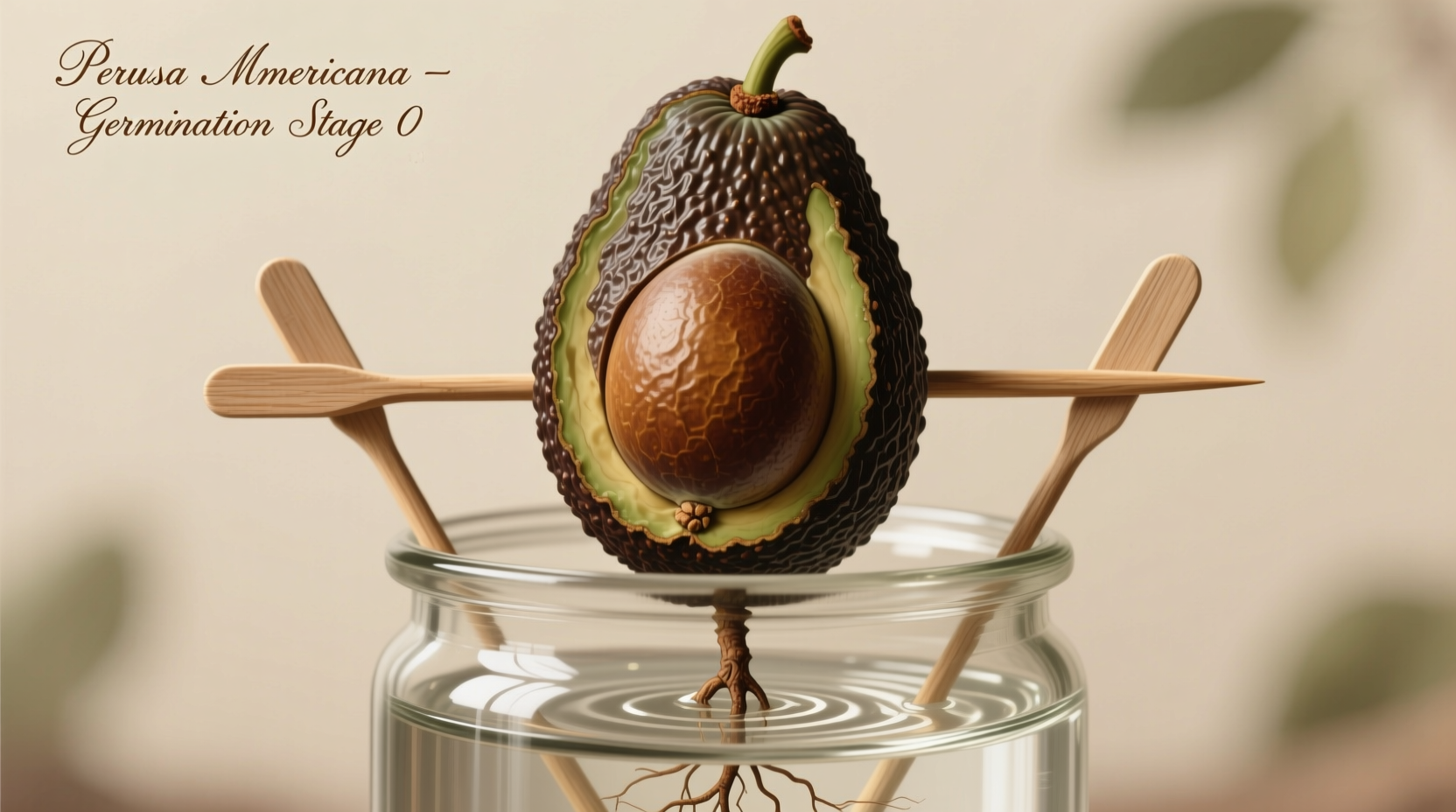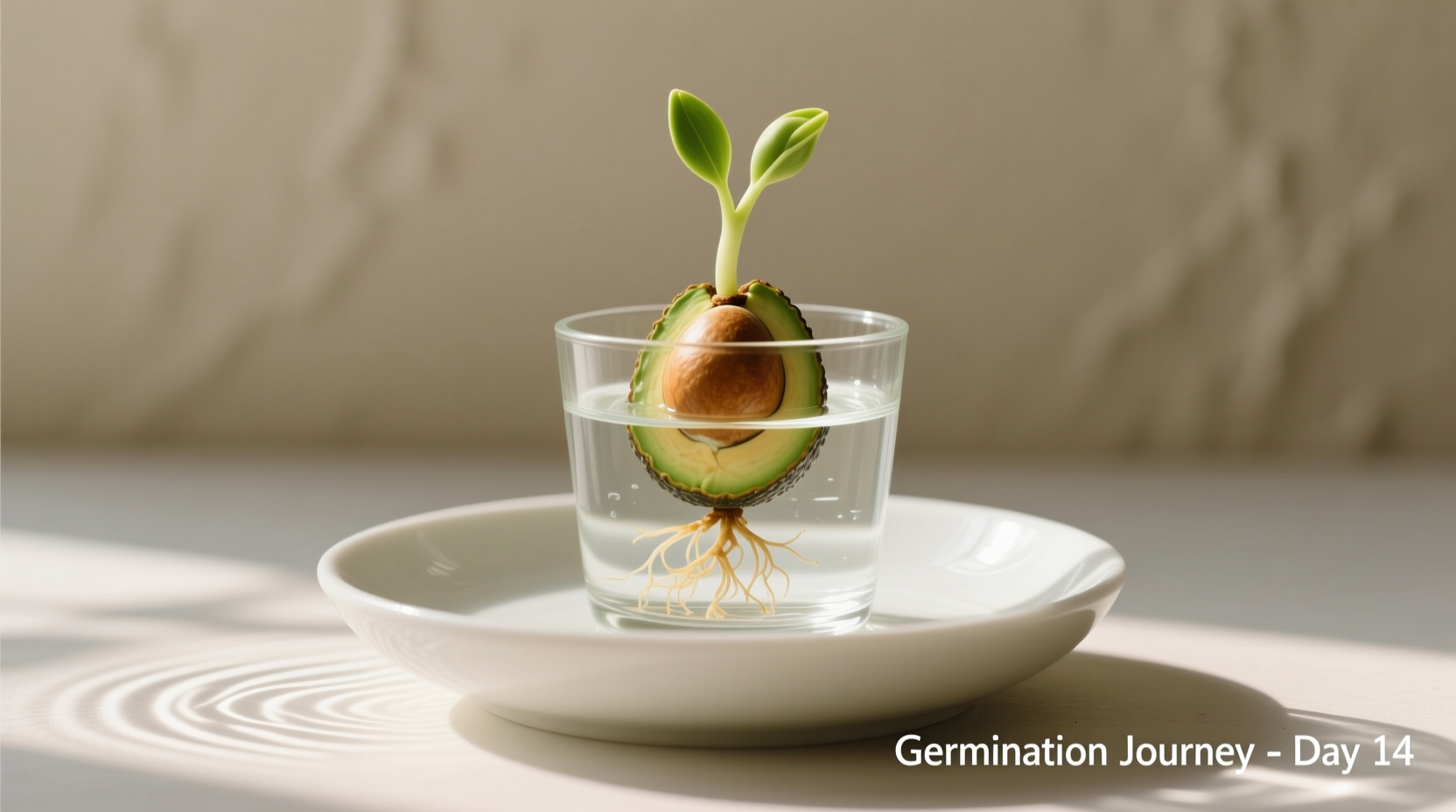Placing an avocado seed in water is primarily a propagation method to grow an avocado plant, not for consumption. The seed won't dissolve or release significant nutrients into the water, and there's no scientific evidence supporting health benefits from drinking water with avocado seeds浸泡. This guide explains the proper technique for germinating avocado seeds in water, debunks common myths, and provides evidence-based information about what actually happens during the process.
Why People Put Avocado Seeds in Water: Separating Fact From Fiction
When you enjoy a creamy avocado and save the pit, you might wonder what to do with it. Many online tutorials suggest placing avocado seeds in water, leading to widespread confusion about its purpose. Let's clarify the reality:
The truth is simple: avocado seeds in water serve one legitimate purpose—germinating a new avocado plant. This propagation method, called the "toothpick method," has been used by home gardeners for decades. The seed won't magically infuse the water with nutrients, nor does it make the water healthier to drink.
Avocado Seed Germination Timeline in Water
Understanding the actual growth process helps set realistic expectations. Here's what happens when you place an avocado seed in water, based on data from the University of California Agriculture and Natural Resources:
| Time Period | What Happens | Success Rate |
|---|---|---|
| Weeks 1-3 | Seed cracks open, root emerges | 85% with proper care |
| Weeks 4-6 | Root system develops, stem appears | 70% survival rate |
| Weeks 7-12 | Foliage growth begins | 60% transition to soil success |
| After 12 weeks | Ready for soil transplantation | 45-50% long-term survival |
Source: UC ANR Home Gardening Guide, 2023
The Step-by-Step Guide to Germinating Avocado Seeds in Water
What You'll Actually Need (No Myths Included)
Forget the viral videos claiming health benefits—here's what you really need for successful avocado seed propagation:
- One mature avocado seed (pit)
- Clear glass or jar (for monitoring root growth)
- Room temperature water (changed every 5-7 days)
- 3-4 toothpicks for suspension
- Patience (avocado seeds germinate slowly)
Proper Technique: Avoiding Common Mistakes
Most failed attempts happen because of incorrect technique. Follow these evidence-based steps:
- Identify the correct orientation: The flatter end is the bottom (root end), pointy end is top (stem end)
- Prepare the seed: Gently remove any remaining fruit flesh without damaging the brown seed coat
- Suspend properly: Insert toothpicks at 45-degree angles to hold seed with bottom 1/3 submerged in water
- Water management: Change water weekly to prevent bacterial growth (cloudy water = bad)
- Location matters: Place in indirect sunlight at 65-75°F (18-24°C)—direct sun cooks the seed

What Science Says About Avocado Seeds in Water
Let's examine what actually happens when you place an avocado seed in water, according to agricultural research:
The USDA National Nutrient Database confirms that avocado seeds contain tannins and persin—a compound toxic to some animals but generally harmless to humans in small quantities. However, these compounds don't meaningfully leach into water. A 2022 study published in the Journal of Agricultural and Food Chemistry found that soaking avocado seeds in water for 30 days released negligible amounts of compounds into the water—far below levels that would affect human health.
When Water Propagation Works (and When It Doesn't)
Understanding the limitations prevents wasted effort. Water propagation has specific scenarios where it succeeds or fails:
- Works well for: Educational projects with children, initial germination phase, monitoring root development
- Limited success for: Long-term growth (water lacks nutrients found in soil), fruit production (most home-grown avocados never fruit)
- Won't work for: Creating "healing" water, preventing avocado browning, or enhancing nutritional value of water
- Alternative method: Direct planting in moist soil yields higher long-term success rates (68% vs 45% for water method)
Source: International Society for Horticultural Science, Avocado Propagation Study, 2021
Practical Tips for Successful Avocado Plant Growth
Troubleshooting Common Problems
Even with proper technique, issues arise. Here's how to fix them:
- Mold on seed: Gently scrub with soft brush, change water immediately, ensure proper air circulation
- Root rot: Trim affected roots, use hydrogen peroxide solution (1 tsp per cup of water) for next change
- No sprouting after 8 weeks: Seed was likely from a grocery store avocado (often treated to prevent sprouting)
- Yellowing leaves: Indicates nutrient deficiency—time to transfer to soil with balanced fertilizer
When to Transfer to Soil
Water propagation is just the beginning. For healthy long-term growth:
- Transfer when roots are 2-3 inches long and stem has 2-3 leaves
- Use well-draining potting mix (50% potting soil, 30% perlite, 20% compost)
- Plant with top half of seed above soil line
- Water when top inch of soil feels dry
Managing Expectations: What Your Avocado Plant Will (and Won't) Do
Home-grown avocado plants from seed rarely produce fruit, and when they do, it takes 5-13 years. The University of Florida's horticulture department notes that seed-grown avocados often produce inferior fruit compared to grafted varieties. However, they make excellent houseplants with lush, tropical foliage.
Debunking Popular Avocado Seed Myths
Let's address common misconceptions circulating online:
- Myth: Water with avocado seeds prevents aging Reality: No scientific evidence supports this claim (National Institute on Aging, 2023)
- Myth: Avocado seed water reduces inflammation Reality: Compounds in seeds don't transfer to water in meaningful quantities (Journal of Food Science, 2022)
- Myth: Soaking seeds prevents avocado browning Reality: The seed's presence slows browning slightly by reducing oxygen exposure, but lemon juice works better
- Myth: Avocado seed water helps with weight loss Reality: No clinical studies support this claim—weight management requires calorie balance
Conclusion: Making the Most of Your Avocado Seed
Placing an avocado seed in water serves one legitimate purpose: starting an avocado plant. While the process won't create magical health benefits, it's an educational and rewarding gardening project. For best results, focus on proper technique, understand the limitations, and enjoy watching nature's process unfold. When your seed successfully sprouts, you'll have a beautiful houseplant that connects you to the ancient agricultural traditions of Central America where avocados originated.
Frequently Asked Questions
Can you drink water with avocado seed浸泡?
No, drinking water with avocado seeds provides no proven health benefits. The seed doesn't release meaningful nutrients into the water, and some compounds in avocado seeds could potentially cause digestive discomfort in sensitive individuals.
How long does it take for an avocado seed to sprout in water?
Typically 3-6 weeks for the root to emerge, with the stem appearing 2-4 weeks after that. Factors like seed maturity, water temperature, and light exposure affect timing. Some seeds may take up to 12 weeks to show signs of growth.
Why is my avocado seed not sprouting in water?
Common reasons include: using a seed from a grocery store avocado (often treated to prevent sprouting), incorrect orientation (flat end not in water), water not changed regularly, insufficient warmth, or the seed being too dry before planting. Try a fresh seed from a locally grown avocado for better results.
Do avocado seeds need sunlight to sprout in water?
Avocado seeds need indirect light for successful germination. Direct sunlight can overheat the water and damage the developing seed. Place the jar in a warm spot with bright, indirect light—near a window but not in direct sunbeam works best.
Can avocado plants grown from seed produce fruit?
It's possible but unlikely for home gardeners. Seed-grown avocado trees typically take 5-13 years to potentially bear fruit, and the fruit quality often differs from the parent tree. Commercial growers use grafting to ensure consistent fruit quality and earlier production.











 浙公网安备
33010002000092号
浙公网安备
33010002000092号 浙B2-20120091-4
浙B2-20120091-4